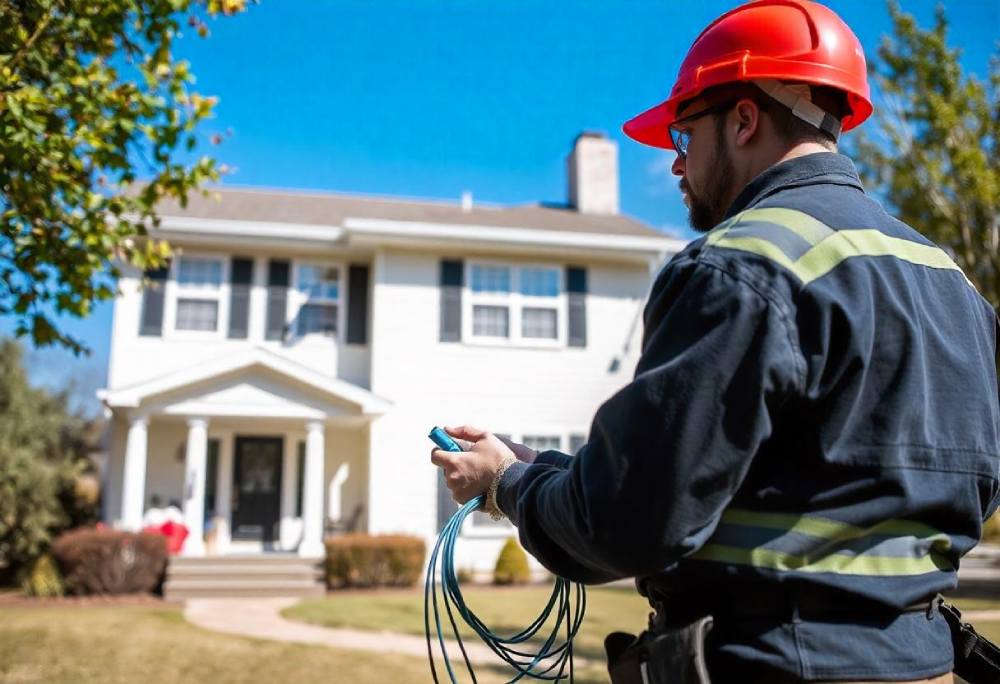Making the Data-Driven Decision to Add Fiber to Your Fixed Wireless Offerings: A Comprehensive Guide for WISP Owners
- by ISPadmin
- 2025 / 01 / 14
- Market Analysis


For Wireless Internet Service Providers (WISPs) looking to expand their service offerings and improve network reliability, adding fiber to their infrastructure can be a strategic move. However, this decision should not be made lightly. To ensure it’s the right choice for your business and customers, it’s essential to evaluate the potential benefits, challenges, and long-term implications based on data and solid planning.
This guide will help WISP owners evaluate the key factors to consider when adding fiber service to their fixed wireless offerings. By carefully analyzing these aspects, you can make an informed, data-driven decision that will support sustainable growth.
1. Assess Your Current Network Capacity and Limitations
Before diving into fiber deployments, you need to evaluate the performance and limitations of your existing fixed wireless network.
- Current Network Bandwidth: What is the current capacity of your wireless network? Are you reaching its limits during peak hours, or is your system capable of handling future growth?
- Service Reliability and Coverage Gaps: Are there areas in your service area where your fixed wireless network struggles, such as rural areas with low signal quality or bandwidth bottlenecks?
- Customer Demand and Growth Projections: Are there specific customers, industries, or areas requesting higher speeds or more reliable connections? Growth projections help determine if a fiber upgrade is needed in the short or long term.
2. Understand the Benefits of Fiber for Your Business
Fiber optic technology offers several advantages that can greatly enhance the capabilities of your network and improve your customer experience.
- Higher Bandwidth: Fiber allows for much faster speeds compared to traditional wireless technologies, which can benefit both residential and business customers with data-heavy needs (e.g., remote work, gaming, video streaming).
- Increased Reliability: Fiber is less prone to interference, making it more reliable than fixed wireless, especially in areas with high congestion or bad weather.
- Long-Term Scalability: Fiber infrastructure is built for future-proofing. Adding more capacity is easier and more cost-effective compared to continually upgrading wireless equipment to keep up with customer demands.
- Improved Quality of Service (QoS): Fiber provides consistent and predictable performance, which is critical for service level agreements (SLAs) in business and enterprise services.
3. Evaluate the Cost and ROI of Fiber Deployment
Adding fiber to your offerings requires a significant investment. Understanding the costs involved is critical to making an informed decision.
- Upfront Costs: Fiber deployment involves significant capital expenditure (CapEx) for infrastructure, including fiber cables, trenching, poles, switches, and other essential equipment. Get quotes from multiple vendors for a realistic estimate.
- Ongoing Maintenance: Fiber networks require regular maintenance and monitoring to ensure optimal performance. Factor in costs for operational expenditures (OpEx) like labor, equipment repairs, and upgrades.
- Cost per Customer: How many customers will be served by the fiber upgrade, and what is the cost per customer for fiber deployment in your market? A higher-density area may reduce deployment costs per customer, while more rural areas may increase costs.
- Return on Investment (ROI): Determine the expected ROI by calculating the revenue potential of new customers and higher-paying business services. Fiber typically allows WISPs to charge higher prices for faster, more reliable services.
4. Analyze Your Market and Competition
The competitive landscape will influence whether adding fiber is a sustainable growth strategy.
- Market Demand: Are there existing competitors in your area already offering fiber? What is the demand for faster internet in your service area, especially in underserved or rural regions? Analyze local demographics, including the number of businesses, high-demand customers (e.g., telecommuters), and areas with insufficient service.
- Competitor Pricing and Services: What are your competitors charging for fiber services, and how do your fixed wireless offerings compare? Can your business maintain competitive pricing if you add fiber, or will it require strategic pricing changes?
- Regulatory Landscape: Are there government incentives, grants, or subsidies available to assist in the cost of fiber deployment (such as BEAD funding)? This can impact both the feasibility and timing of your fiber expansion.
5. Evaluate Technological Integration and Compatibility
Integrating fiber with your existing wireless network requires technical expertise and planning.
- Network Design: What will your fiber network architecture look like? Consider whether you’ll implement a full fiber-to-the-premises (FTTP) solution or fiber to the node (FTTN), which would still rely on wireless connections to the last mile.
- Backhaul Requirements: Assess the bandwidth requirements for backhaul connections. Fiber backhaul can improve your network’s capacity and reduce congestion at aggregation points.
- Interoperability with Existing Infrastructure: How easily will fiber integrate with your existing wireless base stations, routers, and other equipment? Will you need to upgrade or replace some of your current hardware?
6. Plan for Customer Onboarding and Education
Adding fiber to your service offerings may require you to educate your customers and ensure smooth onboarding.
- Customer Education: Fiber is a different technology compared to fixed wireless, and some customers may not understand the benefits. Be prepared to explain the advantages in clear, customer-friendly terms.
- Service Transition: Will you be able to offer fiber as an upgrade for current customers, or will new customers need to be onboarded? Develop a strategy to migrate existing customers, if necessary, without disrupting service.
- Pricing Plans and Packaging: How will you price your new fiber offerings? Offering multiple tiers or bundled packages can help attract a variety of customers, from basic residential to enterprise-level business solutions.
7. Assess Future-Proofing and Long-Term Viability
The decision to deploy fiber isn’t just about meeting current demands but about ensuring your network’s future growth.
- Demand for Fiber Services: Consider the long-term demand for fiber in your region. With increasing reliance on internet connectivity for everything from telemedicine to smart homes, fiber is well-positioned for future growth.
- Technology Evolution: Fiber supports the next generation of technology, including 5G backhaul and IoT devices. Adding fiber to your network can position your company as a leader in the evolving broadband landscape.
- Flexibility for Future Expansion: Consider whether your fiber deployment allows for easy upgrades and expansions. Fiber networks can scale much more easily than wireless networks, giving you more flexibility to adapt to future needs.
8. Review Legal and Regulatory Considerations
Fiber deployments may involve navigating specific legal and regulatory hurdles.
- Permitting and Local Regulations: Check with local authorities for permitting requirements, rights-of-way issues, and zoning regulations. Fiber deployments often require permission to dig or install poles, which could be time-consuming.
- Government Funding and Incentives: Investigate opportunities for government grants or loans to support fiber expansion, such as those provided under the BEAD Program (Broadband Equity Access and Deployment) or other federal and state initiatives.
Conclusion: Making the Data-Driven Decision
Adding fiber to your fixed wireless service offering can be a game-changer, but it requires careful planning and data analysis. By thoroughly evaluating network limitations, costs, market demand, competition, and technological integration, WISP owners can make an informed decision that aligns with both short-term and long-term goals.
The key to success lies in using data to guide your decisions. Conducting a detailed market analysis, financial assessment, and technical evaluation will provide the clarity needed to move forward with fiber deployments in a way that maximizes return on investment and ensures long-term sustainability.
At ISP Revolution, we specialize in helping WISPs navigate these decisions. Whether you need assistance with feasibility studies, network design, or funding applications, we’re here to guide you every step of the way.
RECENT BLOG
MORE INFO
ISP Resolution © 2025 All Rights Reserved
